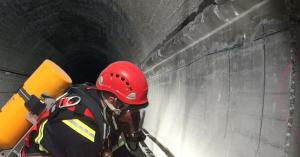LOS ALAMITOS, CA, UNITED STATES, March 11, 2024 /EINPresswire.com/ — According to the National Institute for Occupational Safety & Health (NIOSH), over one-third of confined space incidents involve multiple fatalities. Proper confined space planning can reduce the chances of this happening, provide a safer work environment for workers, and make it easier to carry out rescues. Read on as we discuss the necessary elements to consider when planning tasks involving confined spaces and how this impacts rescue efforts.
Identify Potential Hazards and Risks
All confined spaces present a unique set of hazards and risks that require special planning. It is important to enforce controls that promote worker safety. Identifying the dangers and risks associated with the particular confined space being dealt with is the first step.
What is a confined space according to the Occupational Safety and Health Administration (OSHA)? A permit-required confined space (PRCS) usually has one or more of the following features that can pose a risk:
– It has or may have the potential to have a hazardous atmosphere
– The area contains material that could potentially engulf entrants
– It is built in a way that could trap an entrant or asphyxiate them
– The space presents other recognized severe health or safety hazards
Once the hazards and risks are identified, safety measures can be set up to help minimize the risk associated with entering the confined space.
Review All Spaces With the Potential of Being a Confined Space
It’s essential to carry out a comprehensive pre-entry risk/hazard assessment that reviews all spaces within a facility and determines whether these carry the potential to be a confined space. Next, evaluate whether to classify these spaces as a PRCS. The assessment should be appropriately structured and documented. It should record all potential hazards. These include non-atmospheric risks, such as pneumatic, electrical, slip/fall, trip hazards, etc.
Use this information to develop a plan for entering the space safely.
Develop Plans for Carrying Out Rescues
Understanding the definition of a confined space and deciding how to conduct a safe entry is not enough. Effective confined space planning requires rescue plans, as well. The best companies are proactive in this regard. They spend an equal amount of time planning entry in a confined space, defining rescue efforts, and conducting an entry.
They understand that even if a space is not particularly hazardous under OSHA guidelines, they must be prepared if things go sideways. Such companies understand things can go wrong very quickly when working in confined spaces and plan to deal with adverse situations.
Use a Confined Space Rescue Service
Proper confined space planning can save lives, enable a safer working environment, and help prepare for challenging situations. If an internal team for confined space planning is not possible, use a confined space safety provider. They will have a qualified team of experts in place who can help with confined space rescue. They can conduct a study to identify confined spaces in your facilities, determine the risks and hazards associated with these spaces, and develop rescue plans to ensure continued safety.
Lance B
DCS Rescue
+1 5625953002
lanceb@anconservices.com
Visit us on social media:
Facebook
LinkedIn
